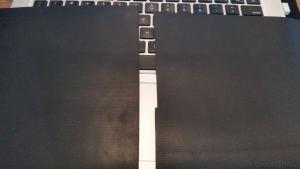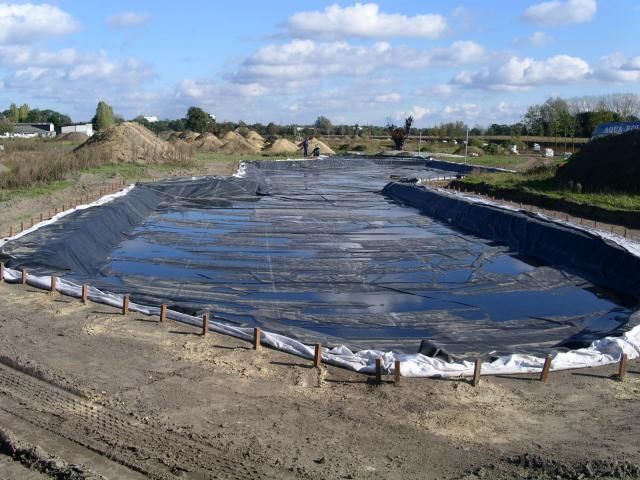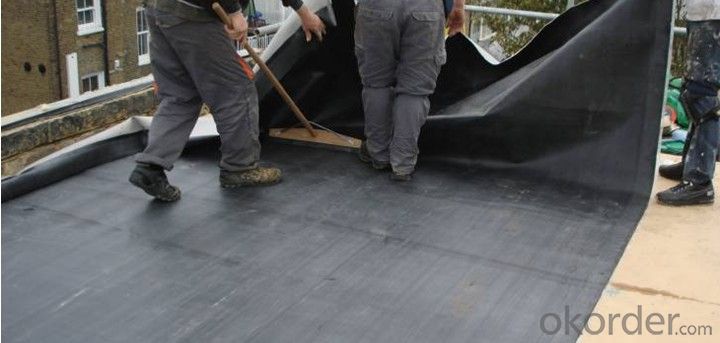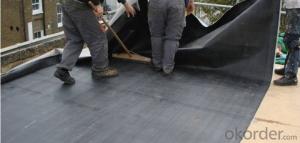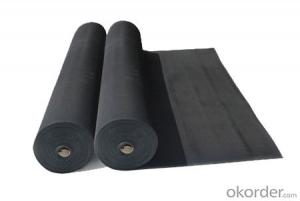EPDM Reinforced Waterproof Membrane with 1.0mm Thickness
- Loading Port:
- Shanghai
- Payment Terms:
- TT OR LC
- Min Order Qty:
- 50000 m²
- Supply Capability:
- 5000000 m²/month
OKorder Service Pledge
OKorder Financial Service
You Might Also Like
EPDM Reinforced Waterproof Membrane with 1.0mm Thickness
Description Of EPDM Reinforced Waterproof Membrane with 1.0mm Thickness:
1. Excellent physical and mechanical performance, high tearing resistance;good deformation adaptability, high puncture resistance;
2. High aging resistance, high UV resistance, anti-acid & alkali;
3. Excellent low & high temperature resistance, innocuous, long life span;
4. Perfect water proof performance, seepage and humidity resistance.
Main Features of EPDM Reinforced Waterproof Membrane with 1.0mm Thickness:
A.Polyester based SBS Modified Bitumen Waterproofing Membrane
a. Strong impermeability
b. High tensile strength, elongation, ability to adapt the grassroots shrinkage deformation and cracking
c. Puncture-resistant, broken resistant, tear-resistant
d. The corrosion resistance, resistance to mildew, weathering good
e. Construction convenient, hot-melt can be operated Four Seasons Construction, reliable joints
B. Fiberglass based SBS Modified Bitumen Waterproofing Membrane
a. High tensile strength, stability of a good size
b. High Temperature good performance
c. Damage resistance, corrosion resistance, resistance to mildew, weathering good performance
d. Good construction performance, reliable joints.
Specifications of EPDM Reinforced Waterproof Membrane with 1.0mm Thickness:
| Material | EPDM Rubber |
| Size | 1.2m (width)*20m (length) or customized, weldable type 2.05m or 4m width |
| Thick | 1.2mm, 1.5mm, 2.0mm |
| Type | Vulcanized & Weldable |
| Pattern | Non-reinforced (homogeneous) |
| Certificate | ISO9001/14001 |
Applications of EPDM Reinforced Waterproof Membrane with 1.0mm Thickness:
geomembrane used in groundsill of road, highway, railway and waterproof layer of swelling clay and wet collapsed loess.Geomembrane can be widely used in areas of garbage burying, waste disposal and underground construction projects.such as below:
- aquaculture ponds
- Ouchi root barrier membrane
- Floating baffles;
- Process wastewater
- Stormwater impoundments;
- Secondary containment;
- Spill containment
- Manure and biogas tanks and covers
- Potable water tanks and covers;
- Sludge Drying beds;
- Bioremediation covers & liners;
- Leachate ponds



IMages of EPDM Reinforced Waterproof Membrane with 1.0mm Thickness:




FAQ of EPDM Reinforced Waterproof Membrane with 1.0mm Thickness:
1. What are we supplying?
We are specialized in producing Colorful Asphalt Roof Shingle, SBS/APP modified bitumen waterproof membrane, Self adhesive bitumen waterproof membrane, PVC waterproofing membrane, EPDM rubber roofing membrane, Single Component Polyurethane Waterproof Coating, and Spray Polyurea Waterproof Coating
.
2. How Many years experience do we have?
We have been exported to more than 20 countries in the past 15 years.
3. How long do we usually reply your request?
We always reply our customer within 24 hours.
- Q: Can a waterproofing membrane be used in areas with vehicular traffic?
- Certainly! It is indeed possible to utilize a waterproofing membrane in regions frequented by vehicles. In reality, there exist distinct variants of waterproofing membranes meticulously crafted to endure the pressure and motion exerted by automobiles. These specialized membranes, referred to as vehicular or traffic-bearing membranes, are generally composed of sturdier materials like rubberized asphalt or modified bitumen. They are purposefully engineered to furnish a robust and flexible barricade against water and moisture, whilst simultaneously withstanding the burdensome loads and incessant traffic commonly associated with vehicles. Vehicular membranes find widespread application in parking garages, bridges, and other sites where vehicles are commonly found.
- Q: Does a waterproofing membrane require any special tools or equipment for installation?
- Typically, a waterproofing membrane installation would necessitate the use of specific tools and equipment. The presence of these tools and equipment is crucial in order to guarantee a proper and effective installation. Some commonly employed tools throughout the installation procedure include a trowel, roller, brush, and squeegee. These tools assist in the even and smooth application of the membrane. Moreover, particular types of waterproofing membranes that require heat activation might necessitate the use of specialized equipment like a heat gun or torch. It is of utmost importance to adhere to the manufacturer's instructions and guidelines regarding the tools and equipment required for the specific type of waterproofing membrane being utilized. By utilizing the appropriate tools and equipment, one can ensure a successful installation and enhance the performance and durability of the waterproofing membrane.
- Q: Can a waterproofing membrane be used for bridges?
- Bridges can benefit from the use of a waterproofing membrane. Due to their exposure to harsh weather conditions and constant contact with water, bridges are susceptible to deterioration and structural harm. By applying a waterproofing membrane to the bridge surface, it becomes shielded against water infiltration, preventing the corroding of reinforcing steel and extending the bridge's lifespan. Acting as a barrier, the membrane prevents water from permeating the concrete and causing structural damage. Moreover, it aids in minimizing the negative impact of freeze-thaw cycles, which can further harm the bridge. Furthermore, the waterproofing membrane can enhance the overall durability and performance of the bridge, ultimately reducing maintenance and repair expenses in the long term.
- Q: 3MM thick, one square meter waterproof membrane SBS price?
- 4, SBS modified asphalt waterproofing membrane is SBS rubber modified petroleum asphalt cited as the invasion coating, polyester fiber non-woven fabrics, jute cloth, fiberglass mats were made for the fetal base, to plastic film for the defense Sticky isolation layer, by the selection, ingredients, eutectic, invasion, composite molding, curling and other processes processing production.
- Q: How does a waterproofing membrane handle cracks in the substrate?
- The purpose of a waterproofing membrane is to prevent water from entering through cracks in the substrate. This is achieved by creating a barrier that stops water from penetrating through the cracks. Typically, the membrane is made from a flexible material like rubber or synthetic polymers, allowing it to stretch and move with the substrate without tearing or breaking. When cracks appear in the substrate, the membrane can bridge over them, maintaining its integrity and preventing water from seeping through. Some membranes even have the ability to self-heal, sealing minor cracks on their own and ensuring continuous protection against water ingress. To improve its ability to bridge cracks, the waterproofing membrane can be reinforced with fibers or fabric layers. These reinforcements enhance the tensile strength and flexibility of the membrane, enabling it to effectively span larger cracks or accommodate movement in the substrate without compromising its waterproofing performance. It is important to consider that the waterproofing membrane's ability to handle cracks in the substrate depends on various factors. These include the type and size of the cracks, the movement of the substrate, and the quality of the membrane installation. To maximize the membrane's ability to handle cracks and provide long-lasting waterproofing protection, it is crucial to follow the manufacturer's guidelines and ensure proper surface preparation and installation techniques.
- Q: Can a waterproofing membrane be used for plaza decks?
- Yes, a waterproofing membrane can be used for plaza decks. Plaza decks are typically outdoor spaces that require protection from water infiltration to prevent damage to the underlying structure. Waterproofing membranes are designed to create a barrier that prevents water from seeping into the deck and causing issues such as leaks, deterioration, and structural damage. These membranes are often made of materials such as bitumen, rubber, or polyurethane, which are highly resistant to water penetration. By installing a waterproofing membrane on a plaza deck, it ensures that the deck remains watertight and protects the integrity of the entire structure. Additionally, these membranes can also provide added benefits such as UV resistance, durability, and ease of maintenance, making them an ideal solution for plaza decks.
- Q: Can a waterproofing membrane be used in conjunction with solar panel installations?
- Yes, a waterproofing membrane can be used in conjunction with solar panel installations. Waterproofing membranes are commonly used to protect roofs and other surfaces from water damage, and they can provide an additional layer of protection for solar panels. This can help to prevent water infiltration and potential damage to the solar panels and their electrical components. Additionally, waterproofing membranes can also help to extend the lifespan of the solar panel system by providing an extra barrier against moisture and other environmental factors.
- Q: Can a waterproofing membrane be used on below-grade walls?
- Yes, a waterproofing membrane can be used on below-grade walls. In fact, it is highly recommended to use a waterproofing membrane on below-grade walls to protect them from water infiltration and moisture damage. Below-grade walls are particularly vulnerable to water penetration due to their proximity to the ground and potential for hydrostatic pressure. A waterproofing membrane acts as a barrier, preventing water from seeping into the walls and causing issues such as mold, mildew, rot, and structural damage. It helps to keep the interior of the building dry, preventing potential moisture-related problems.
- Q: Can a waterproofing membrane be used for soundproofing purposes?
- No, a waterproofing membrane cannot be used for soundproofing purposes as it is specifically designed to prevent the penetration of water and does not have the necessary properties to effectively block or absorb sound waves.
- Q: Can a waterproofing membrane be used for wastewater facilities?
- Yes, a waterproofing membrane can be used for wastewater facilities. Waterproofing membranes are commonly used in wastewater facilities to prevent water leakage and seepage. They provide an effective barrier against water infiltration and protect the structure from water damage. Additionally, these membranes are resistant to chemicals and can withstand harsh environmental conditions often found in wastewater facilities.
Send your message to us
EPDM Reinforced Waterproof Membrane with 1.0mm Thickness
- Loading Port:
- Shanghai
- Payment Terms:
- TT OR LC
- Min Order Qty:
- 50000 m²
- Supply Capability:
- 5000000 m²/month
OKorder Service Pledge
OKorder Financial Service
Similar products
Hot products
Hot Searches
Related keywords
